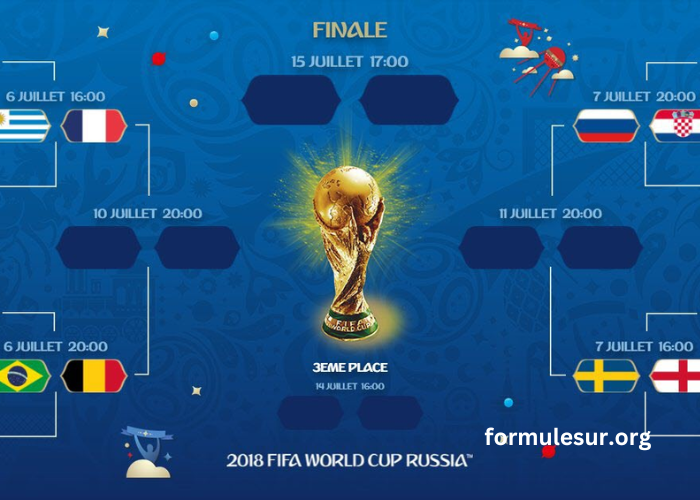The Classement Coupe Du Monde is a globally followed system that organizes the rankings of national teams throughout the FIFA World Cup. Fans, analysts, and players rely on it to track progress, calculate possibilities, and understand the stakes of each match.
As teams battle it out on the world stage, the Classement Coupe Du Monde becomes the most-watched chart in football. It captures every twist and turn in the tournament and serves as the official scoreboard for nations chasing glory.
What Is The Purpose Of The Classement Coupe Du Monde?
The Classement Coupe Du Monde serves a vital role in organizing and structuring the FIFA World Cup by providing an updated ranking of teams throughout the tournament. It tracks points earned from each match, goal differences, and other critical statistics that determine the positioning of teams within their groups.
This system ensures transparency and clarity, allowing fans and professionals alike to instantly see where each country stands. By following the Classement Coupe Du Monde, spectators can identify who leads the group, who is at risk of elimination, and what scenarios are needed for advancement into the knockout rounds.
As each match progresses, the Classement Coupe Du Monde is updated in real-time to reflect the latest scores and outcomes. This dynamic system adds a layer of intensity and excitement, especially in the final rounds of group play when multiple outcomes can determine a team’s fate.
Not only does the Classement Coupe Du Monde organize the early stages of the tournament, but it also influences future fixtures, seeding, and potential matchups in the later rounds. It plays a pivotal role in shaping the entire narrative of the World Cup.
How Does The Classement Coupe Du Monde Work?
The Classement Coupe Du Monde follows a points-based structure where teams are awarded three points for a win, one for a draw, and zero for a loss. Teams are ranked based on their total points, with goal difference and goals scored used as tiebreakers when points are equal.
Each group typically contains four teams, and the Classement Coupe Du Monde allows viewers to track each group’s standings after every match. The top two teams from each group usually advance to the knockout rounds, making the position in the Classement Coupe Du Monde crucial.
If teams are tied on points and goal difference, head-to-head results and fair play points may come into consideration. This makes the Classement Coupe Du Monde a highly strategic and often tense element of the competition, where every yellow card or late goal can have major implications.
As the group stage progresses, the Classement Coupe Du Monde helps players and coaches make tactical decisions by showing who they might face in the next round. This live feedback loop directly affects how matches are approached and strategies developed.
Why Is The Classement Coupe Du Monde So Popular Among Fans?
For football fans around the globe, the Classement Coupe Du Monde is more than just a list of numbers—it’s a story unfolding in real-time. It shows underdogs rising, giants falling, and national dreams either materializing or slipping away. The emotions tied to this ranking make it incredibly engaging.
Every matchday, millions of fans turn to the Classement Coupe Du Monde to calculate possible outcomes, track their team’s progress, and dream about future matchups. It’s a central hub of information, analysis, and speculation that fuels conversation across social media, sports shows, and fan communities.
Fans also use the Classement Coupe Du Monde to track not just their own country but rival nations, potential threats, and surprise performers. It adds drama and context to every match, especially when qualification hangs in the balance.
The excitement surrounding the Classement Coupe Du Monde comes from its unpredictability. With each game, the table can flip dramatically. A last-minute goal can propel a team from third to first or knock a favorite out completely. This ever-changing landscape keeps fans on the edge of their seats.
What Impact Does The Classement Coupe Du Monde Have On Teams?
For national teams, the Classement Coupe Du Monde is a constant motivator and pressure point. It directly affects team morale, tactical planning, and even public perception. A strong standing boosts confidence and builds momentum, while a poor position can lead to tension and criticism.
Coaches use the Classement Coupe Du Monde to decide how aggressively or conservatively to play in upcoming matches. A team at the top might focus on defense to maintain their lead, while a team near elimination might take more risks in search of vital goals and points.
Players are also acutely aware of how their position in the Classement Coupe Du Monde affects their chances of progressing in the tournament. Individual performance is tied to team outcomes, and the table serves as a visual representation of success or failure.
Media coverage often reflects the standings in the Classement Coupe Du Monde, influencing how teams are portrayed in the public eye. A nation leading its group is celebrated, while those at the bottom may face intense scrutiny. These narratives shape the entire tournament experience.
How Is The Classement Coupe Du Monde Different From Other Rankings?
Unlike general football rankings, which are calculated over time based on friendly matches and regional tournaments, the Classement Coupe Du Monde is exclusive to the World Cup. It reflects short-term performance in one of the most high-pressure environments in sport.
Other rankings like the FIFA World Rankings are long-term and involve complex algorithms, but the Classement Coupe Du Monde is simple and direct—points earned in each match determine your position. This clarity makes it more exciting and easier for fans to understand and follow.
What makes the Classement Coupe Du Monde unique is its immediacy. Teams rise and fall rapidly, and the stakes are incredibly high. Every point matters, and there is no room for recovery if you start poorly. This do-or-die nature sets it apart from other football rankings.
In addition, the Classement Coupe Du Monde is broadcast globally, often integrated into TV graphics, live tickers, and online dashboards. It’s a part of the daily conversation during the World Cup and holds universal importance across all nations involved in the tournament.
How Do Analysts And Broadcasters Use The Classement Coupe Du Monde?
Sports analysts rely heavily on the Classement Coupe Du Monde to predict outcomes, build narratives, and evaluate team performances. It’s a central reference point in pre-match discussions, halftime analysis, and post-match breakdowns. The table helps frame the context for every game.
Broadcasters use the Classement Coupe Du Monde to update viewers in real time, offering visuals that show how the group standings shift with each goal. These live updates keep audiences informed and engaged, even if they’re not watching every single match.
Statisticians extract data from the Classement Coupe Du Monde to forecast scenarios—such as which teams will likely qualify, who they might face next, or what goal margins are required. These projections are widely used by media and betting agencies to enhance the viewer experience.
The Classement Coupe Du Monde is also used during press conferences and interviews, where coaches and players respond to their current standings. It shapes how teams address their fans, manage pressure, and outline their strategies moving forward in the competition.
Conclusion
The Classement Coupe Du Monde is the heart of the World Cup’s competitive structure, offering real-time insights into team performances and tournament dynamics. It influences tactics, shapes narratives, fuels fan discussions, and provides a clear path from group stages to the final.
Whether you’re a passionate supporter, a tactical analyst, or just someone who loves the thrill of the game, the Classement Coupe Du Monde delivers the pulse of the tournament every single day.



